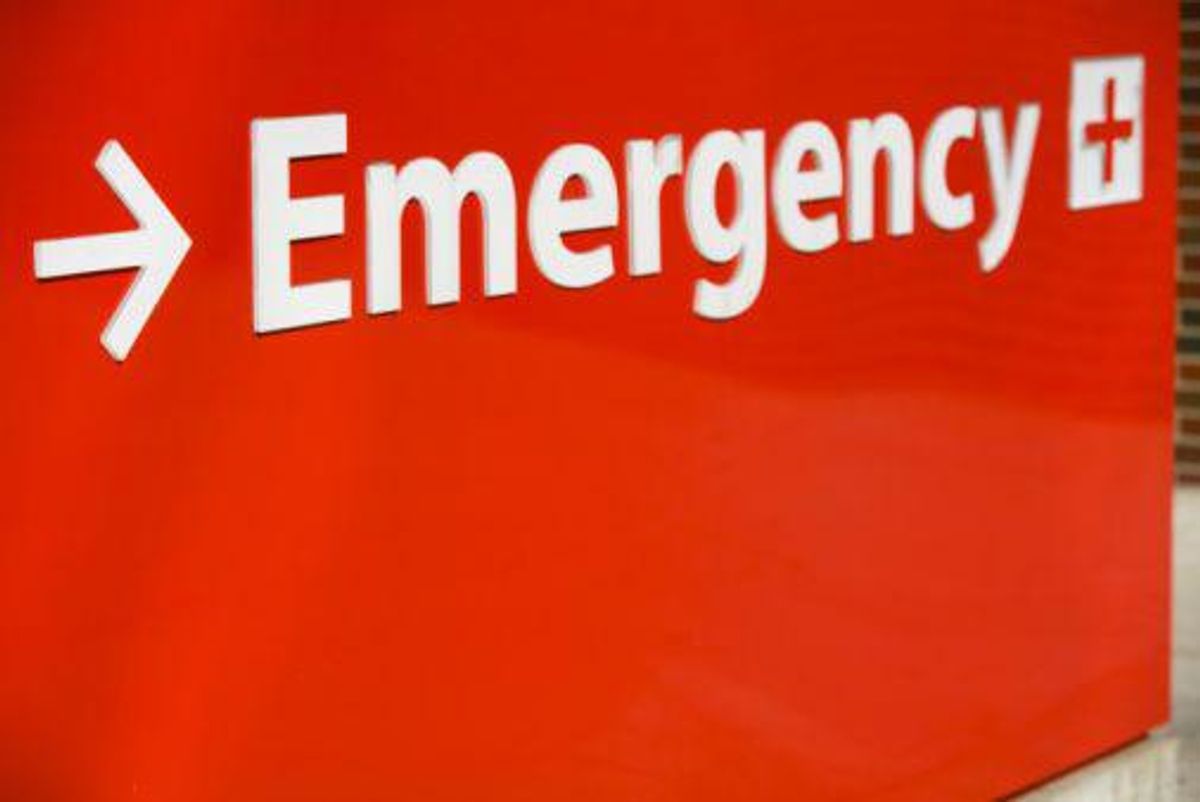Have you ever been to an emergency room? Chances are you have. And if you have, you know how absolutely awful they can be. To me, they're like a microcosm of life itself. Drunk, bruised teenagers with police escorts (a bar brawl?); a pregnant, very worried woman and her husband (a miscarriage?); an elderly man, alone and disoriented (picked up while wandering away from his home?)
Just this week, a few of my colleagues visited ERs for various reasons, and their stories about the long waits, sick crowds and general poor conditions took me back to my time spent in ERs. Like the time my son, as a toddler, cut his head, which bled profusely all the way to the hospital. Or the time my grandmother, while visiting, fell down a flight of stairs in my home at 2 AM. Or most recently when my husband's new replacement hip dislocated and left him writhing in excruciating, uncontrollable pain.
Those visits were warranted.
But many visits can be treated outside emergency rooms, yet for various reasons - lack of health insurance, trouble getting through to your overworked doctor, convenience or ignorance – people are overusing them. And that leads to even more problems, since waits can extend into several hours and treatment by the overworked staff can be less than acceptable.
And while it's true that many lives have been saved in emergency rooms, unfortunately, the opposite is true, too. People do die – sometimes because they simply had to wait too long.
Knowing when to visit an ER can be a thorny issue at times…especially if your mind is muddled with anxiety, fear or pain.
Jane Brody, the health writer for the New York Times, wrote a very helpful column about this last month. She included tips for when an emergency room visit is warranted from author Patrick Conlon (he wrote "The EssentialHospital Handbook"), based on recommendations from the American College of Emergency Physicians. I personally think it's worthwhile to print these out and tape them to the inside of a cabinet or closet door.
- Difficulty breathing
- Chest or upper abdominal pain or pressure
- Fainting, sudden dizziness, weakness
- Changes in vision
- Confusion or changes in mental state
- Any sudden or severe pain
- Uncontrolled bleeding
- Severe or persistent vomiting or diarrhea
- Coughing or vomiting blood
- Suicidal feelings
- Difficulty speaking
- Shortness of breath
- Unusual abdominal pain
I was unusually calm when I had to call 911 to take my husband to the ER. I think it might have been – thank goodness - because it was not life-threatening. So, while I waited for the ambulance, I packed a goody bag full of snacks, reading material and even my I-Pod, since I knew from experience that we'd be in for a pretty long wait.
But all is not always so calm…maybe you want to think in advance of other things you’ll need to bring – just in case:
- Any medications the person takes (prescription and over-the-counter)
- Name and phone number of the family doctor
- Insurance card
- Picture ID (this is something new I encountered: people are actually stealing other people’s insurance cards; some hospitals ask for photo ID. I know, it’s a sad commentary)
- Brief health history
- Cash
- Cell phone – and charger
I'm hopeful that fewer of us will have to visit an ER. Ms. Brody states in her article that the new federal health care legislation includes a generous fund for setting up community health centers to provide treatment to low-income people who have nowhere else to turn but to emergency rooms for their health needs.
And of course, being proactive with your health in the first place to prevent the need for emergency care is always the best medicine, isn't it?







